|
1918 Western Electric CW-929 Horn Speaker |
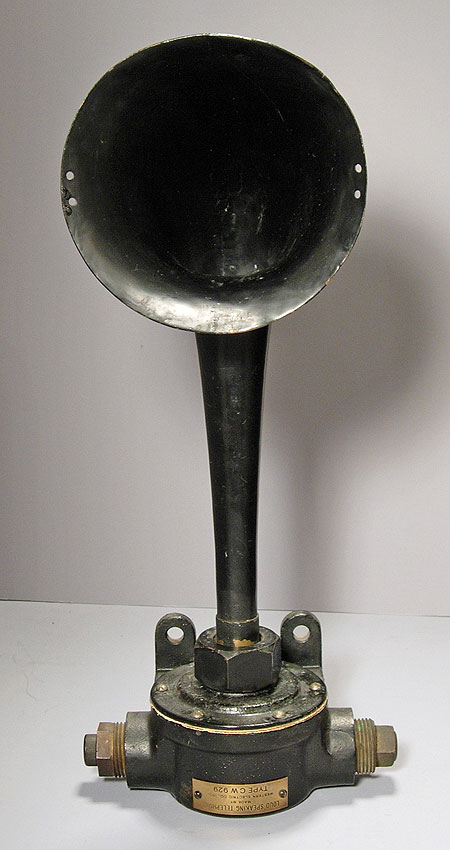 |
| One of
the earliest horn speakers, the CW-929 speaker was designed for the U.S.
Navy by Western Electric in 1918 and was part of the CW-936 radiotelephone set.
This equipment was used on submarine chaser craft
during WW-I. The "CW" designation was the Navy's
manufacturers code denoting Western Electric. Built for shipboard use, it is ruggedly made. The housing for the driver is a bronze casting fitted for conduit access on each side and was designed to be mounted on a wall or bulkhead. The horn and bell are brass. It is 17 inches high, and the bell is 6 inches in diameter. For its size, it is heavy, weighing almost 9 lbs. The nameplate is not upside down. The speaker was intended to be mounted with the bell at the bottom. Several of the pictures on this page are linked to larger versions. Click on the pictures to access those images. |
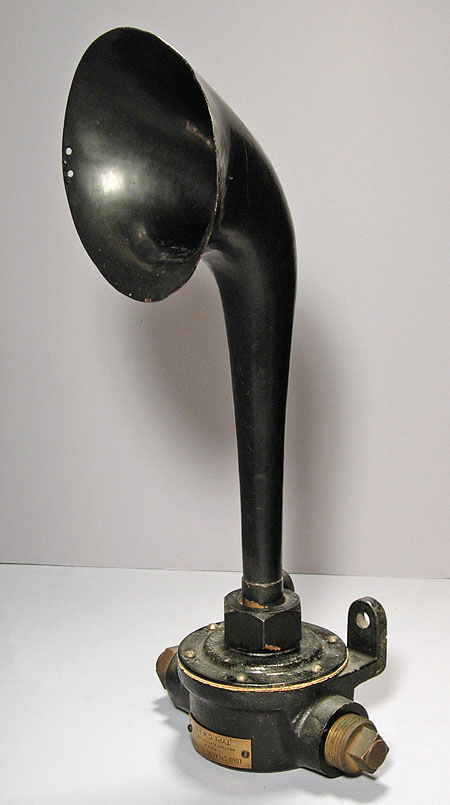 |
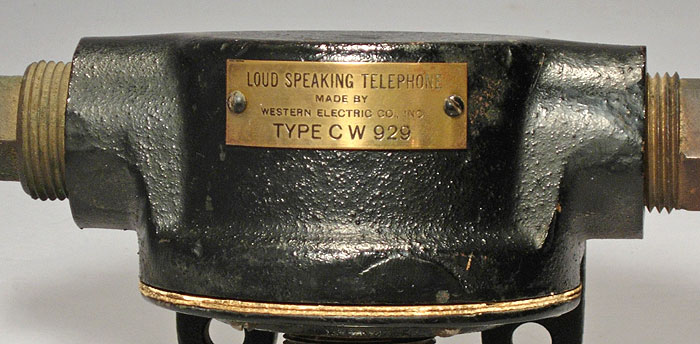 |
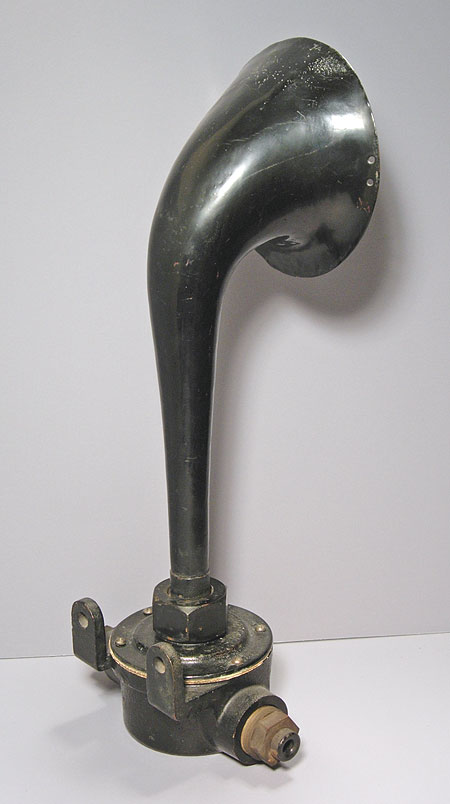 |
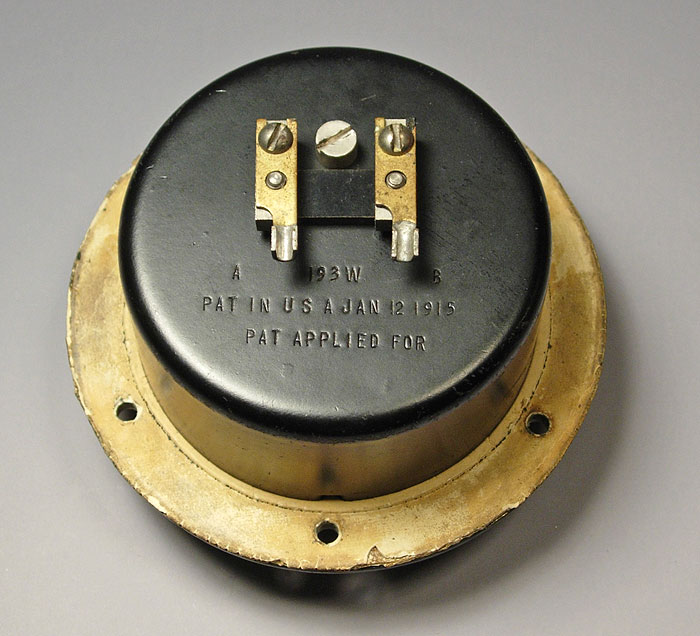 |
| This speaker used the Western Electric type 193W driver. The patent is no. 1,124,401 issued on January 12, 1915 (filed Oct. 5, 1912). |
 |
| This entry appeared in a military surplus dealer's advertisement from 1930. It shows the horn and driver portions of the CW-929. This was probably an unused spare part that was provided without the bronze housing. |
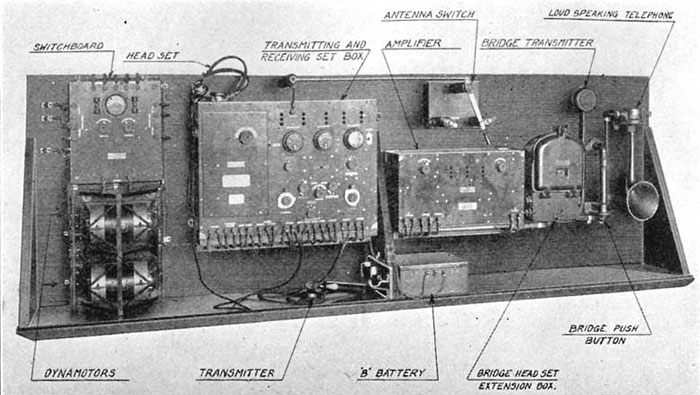 |
|
The CW-936 radiotelephone system is shown above in an image from a Western Electric factory publication. Click here or on the image for a larger version. This is not an actual shipboard installation, rather it is a mockup containing all components that was constructed at the factory for test and display purposes. From left to right is the CW-928 power switch board with two CW-927 dynamotors mounted below it. The large unit is the CW-938 transmitter-receiver, and to its right is the CW-926A audio amplifier. Above the amplifier is the CW-969 antenna switch. Below the transmitter-receiver is the CW-930 microphone with its wall-mounted holder directly to its right. On top of the transmitter-receiver is a CW-834 headset. The bulk of this system was located in the ship's radio room, however, a second microphone (transmitter) and the speaker were located on the bridge as required for tactical operations. The "B" battery case, apparently, contained batteries for the receiver portions of the CW-938. The transmitter and the audio amplifier operated directly off the 350 volt outputs of the dynamotors. The entire system operated from the ship's 30 volt storage batteries. |